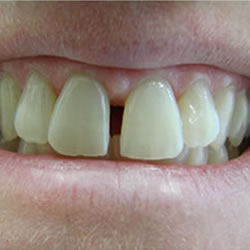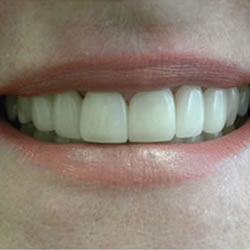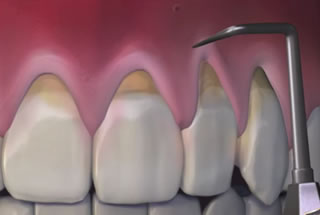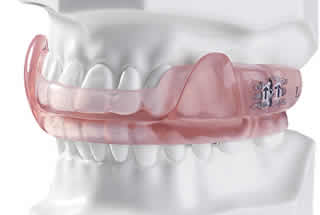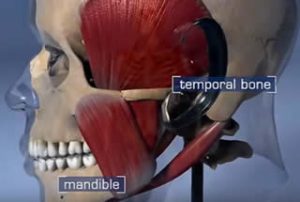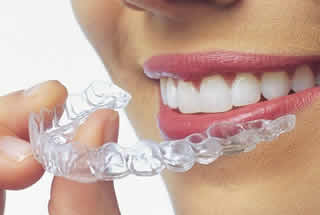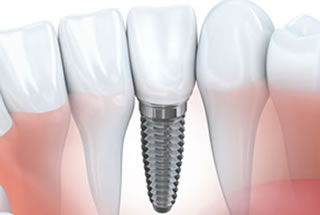Having an accident that involves your teeth can be one of the scariest types of trauma. It’s not only painful, but brings to mind images of a broken or gapped smile. Unfortunately, reports suggest that over half a million people seek treatment in the emergency room each year for dental related issues. Many emergency rooms are not equipped or trained to handle dental problems, so sometimes all you can do is wait to see your dentist.
Since it’s impossible to know exactly when an accident will happen, it’s a good idea to be prepared with items helpful in a dental emergency. Suggested items to include in a dental emergency kit are gauze, Q-tips, salt packets, a small container, over-the-counter pain medication, and sugarless gum. Also include the phone number for your dentist.
If your mouth is damaged in an accident, first rinse your mouth with warm salt water. Follow the directions on the label to take pain medication if necessary. If inner parts of your tooth like the nerves or dentin have been damaged, try covering the area with sugarless gum to protect it until you can get professional treatment.
Sometimes oral injuries can be handled at home until your dentist is available, but more serious situations require seeking care immediately from an emergency dental facility. Some symptoms that usually suggest immediate treatment include facial swelling that is accompanied by a toothache, or uncontrollable bleeding.
If your tooth is knocked out, find it and rinse it with water. Gently try to replace it in the socket. If it can’t be reinserted, place it in a small container with milk or slightly salty water. Ideally, you need to see your dentist within the first couple of hours in order to restore a dislodged tooth.
Following this advice for emergency dental care will help you handle the situation more calmly and know what to do if it happens to you or someone you are with.
Emergency dentist Toronto
A beautiful smile is possible through the application of dental veneers, which hide all sorts of flaws with your teeth. Veneers are customized thin shells of porcelain or composite resin material that are adhered to the fronts of your teeth. They provide a solution to an unappealing or embarrassing smile. Who are the best candidates for dental veneers?
Broken teeth
People with broken, chipped, or cracked teeth can hide those flaws with dental veneers. Those problems are covered right up by perfect new teeth.
Discoloration
Many things can cause teeth to become discolored or stained, and sometimes no amount of teeth whitening methods can brighten them back up. Tough stains can result from taking certain medications, excessive fluoride, large resin fillings, or root canal treatment. Veneers restore a uniform tooth color in the perfect shade that you and your dentist choose together.
Misshapen teeth
Teeth that are not consistently sized, are too small, or are too large can be covered by dental veneers. Teeth that are perfectly healthy can be unappealing due to their appearance in your smile, so covering them with veneers is a simple way to get the teeth you prefer. Veneers can lengthen your front teeth, make teeth flatter, increase the size of teeth, or create a stronger curved appearance.
Worn teeth
Sometimes your teeth simply just wear out, which can give you an aged look before it’s time. Veneers give teeth with worn edges a restored look. Seniors may also opt for veneers because their teeth have truly aged over time, since veneers renew smiles in people of all ages.
Misalignment
Smiles with crooked or gapped teeth can be transformed with dental veneers. They provide a uniform and natural appearance, avoiding the hassles of going through orthodontic work to achieve your perfect smile.
Cosmetic dentist in Toronto Ontario
The most common thing that patients ask about at dental visits is teeth whitening. Foods and drinks that people consume, along with habits like tobacco use, cause teeth to become yellowed and stained. Noticeably discolored teeth can be embarrassing and cause you to look older than you really are. Teeth whitening methods can improve both your appearance and your self-esteem.
Strips and gels
Drugstores carry many choices of whitening strips and gels to spruce up your smile. These products contain varying levels of hydrogen peroxide. Adhesive strips adhere directly to the fronts of your teeth to be worn a certain period of time while the peroxide does its job. Gels are applied to your teeth with a brush. Instructions for these whitening methods should be followed closely, and results are usually not visible until after several days or weeks of consistent use.
Toothpaste
Whitening toothpastes contain ingredients to remove surface stains. Safe ingredients include hydrogen peroxide or carbamide peroxide, but avoid toothpastes containing bleach. This whitening method lightens teeth about one shade with consistent use.
Trays
When other at-home methods aren’t sufficient, whitening trays provide a stronger alternative. Usually purchased through your dentist, you will fill a tray with a special whitening solution and wear the tray for a few hours or overnight. This method takes about a month to complete, but may be uncomfortable for those with highly sensitive teeth or gums.
Professional whitening
Whitening methods performed at your dentist’s office are the most effective and long-lasting choice. Teeth that are severely discolored may require the stronger bleaching ingredients used professionally, and these methods are enhanced by using light or heat as part of the process. Results are visible after the hour-long treatment is complete, and you can expect your teeth to whiten by several shades.
Teeth whitening dentist in Toronto.
Your smile may very well be the first thing others notice about you, so you want it to be as appealing as possible. A dazzling smile not only improves your looks, but also boosts your confidence. If your smile is damaged or dull, a smile makeover may be just what you need.
A smile makeover is a combination of one or more dentistry procedures that are performed to make your smile more attractive. Some common dental issues that smile makeovers target, and the treatments that can improve them, include:
- Discolored teeth transformed with teeth whitening
- Chipped teeth restored with bonding or dental veneers
- Missing teeth replaced with dental implants or crowns
- Misaligned teeth corrected with clear braces or veneers
- Gaps between teeth closed with composite resin fillings, braces, or veneers
- Gummy smiles corrected with laser gum contouring
- Metallic fillings replaced with composite resin fillings
The first step in getting a smile makeover is having a consultation with an experienced dentist. You can explain what you dislike about your smile, discuss treatment options, and plan your smile makeover. Often dentists are able to help you visualize the end results with the help of computer imaging technology.
Once you and your dentist have established a treatment plan, you can schedule your appointments and begin your journey to a new smile. Some procedures require multiple visits and others can be accomplished in just one sitting. If you experience anxiety or dental fears, tell your dentist so that sedation dentistry techniques might be employed to help you have a smooth process. Once you complete your smile makeover, you’ll be on your way to a new you!
Smile makeover dentist in Toronto
Most adults spend a good deal of time at work. For maximum dental health, you need to pay attention to dental care throughout the day, not just in the morning and at night. It may seem difficult to keep up with teeth and gums when you work long hours or have a busy schedule. These tips will help you find time for oral care while on the job.
Think about your smile’s influence
On any given day, you may see clients, speak with co-workers, or meet with the higher ups in your company. During this interaction, you want your smile to look its best. Taking time to brush or chew a piece of sugarless gum can help you communicate the right message.
Let it go
Often, people don’t want to brush or floss in the public bathroom at the office. Remember, these actions are important to your dental health, just like physical fitness matters to general wellness.
Purchase appropriate supplies
If you keep a toothbrush and toothpaste at your desk, you are more likely to utilize them than if you tote the items back and forth from home.
Think before you eat
While chips or cookies from the vending machine may sound good, sugary snacks and junk food can contribute to tooth decay. If you have the munchies, try carrots, apples, or celery instead because these foods are naturally abrasive and will help keep teeth clean.
Stay hydrated
Drinking plenty of water will increase saliva production and wash away food particles from your mouth. Buy a bottle and sip on it during your work day.
Dental office in Toronto
If you have replaced any missing teeth with dental implants, it is likely that you are happy with the new appearance and function of your mouth and want to successfully maintain your restoration. In order to avoid complications, you should follow your dentist’s advice on caring for your implants. Here are some helpful tips.
Mouth rinse
It is important to remove plaque buildup from your teeth every day. When your implants are new, it may be uncomfortable to brush the area but rinsing with an antibacterial mouth rinse is helpful. You can continue using mouth rinse even after you are able to brush and your implants have healed.
Brush and floss
Proper brushing and flossing is necessary. Use a soft toothbrush to gently clean around the implant. Don’t neglect flossing in that area as well, because it will help keep your gums healthy and free from bacteria.
Interdental brush
Your dentist might recommend a type of toothbrush called an interdental brush, which is designed to reach spaces between your teeth more thoroughly than a regular toothbrush.
Antibacterial toothpaste
Using antibacterial toothpaste can help avoid the formation of plaque. Studies have shown that this type of toothpaste may improve the success of dental implants by decreasing the amount of bacteria on your teeth and gums.
Smoking
Quitting tobacco use lowers the risks of complications with your dental implants.
Checkups
Regular dental visits are key in the success of your implants. See your dentist every six months to have your teeth and gums examined, and receive professional cleanings because cleaning around implants may be more complicated and time-consuming than other teeth.
Dental implants dentist in Toronto

 E-Mail Us
E-Mail Us  416-595-5490
416-595-5490